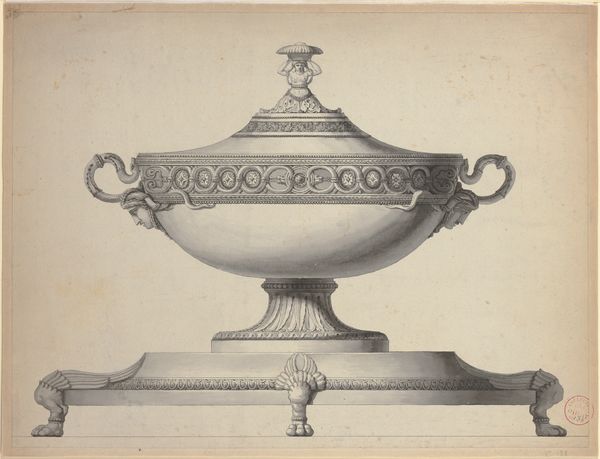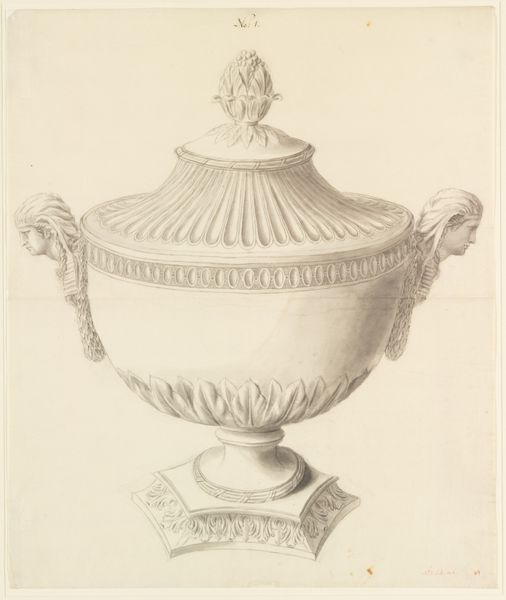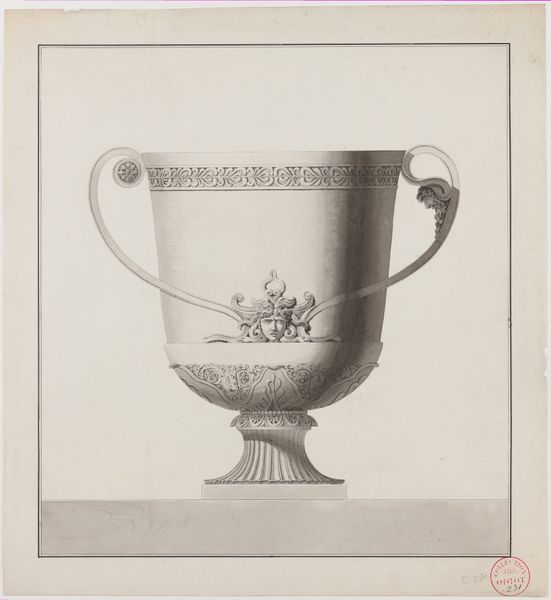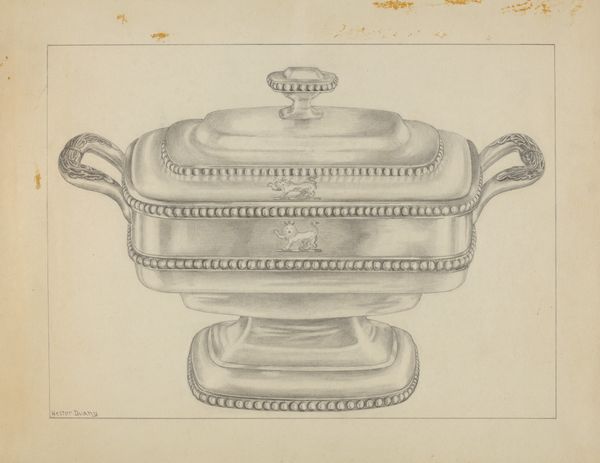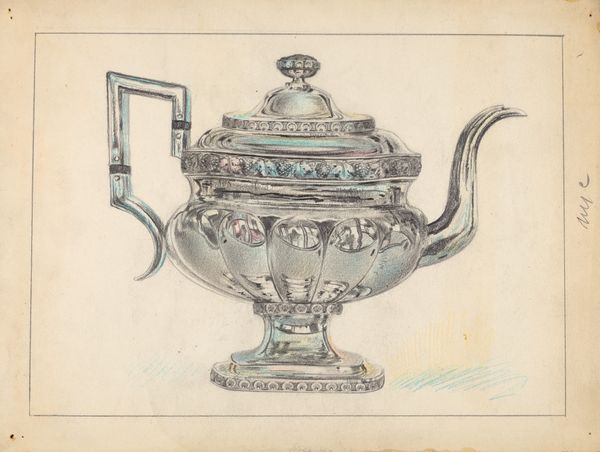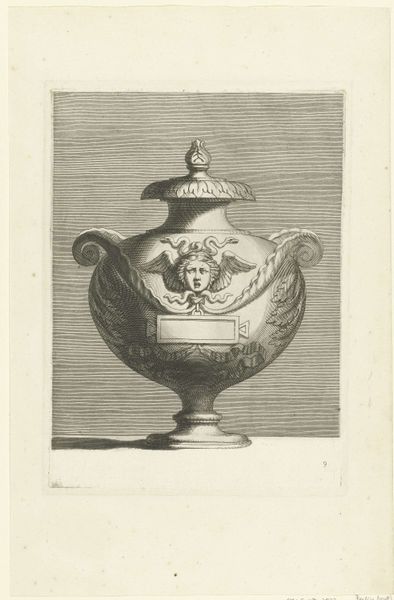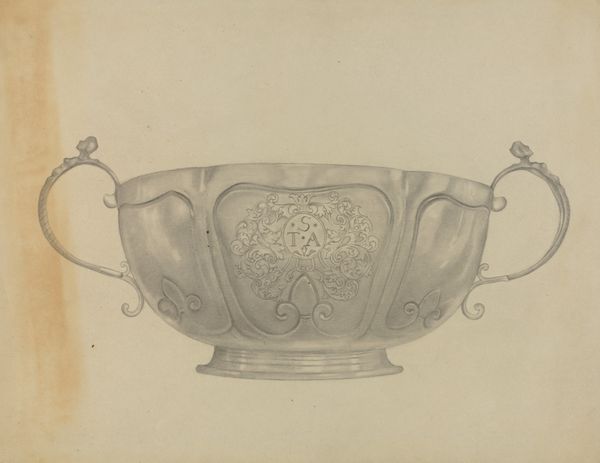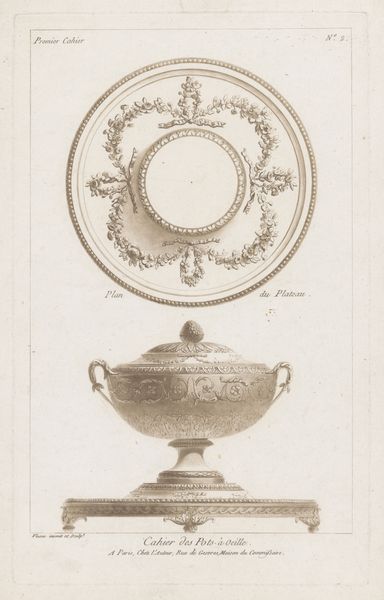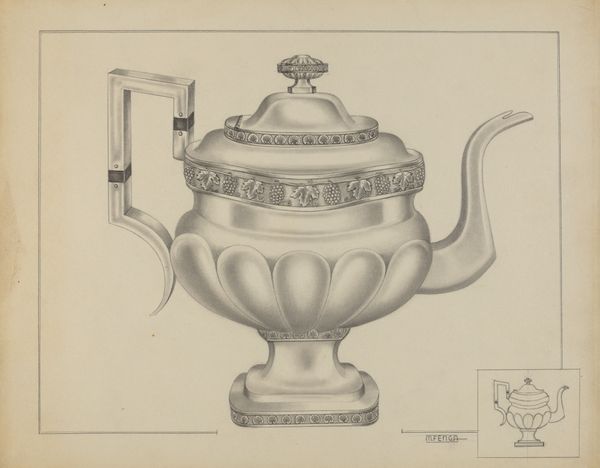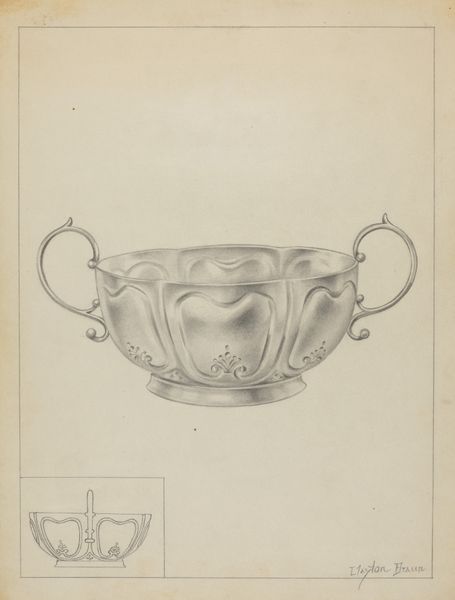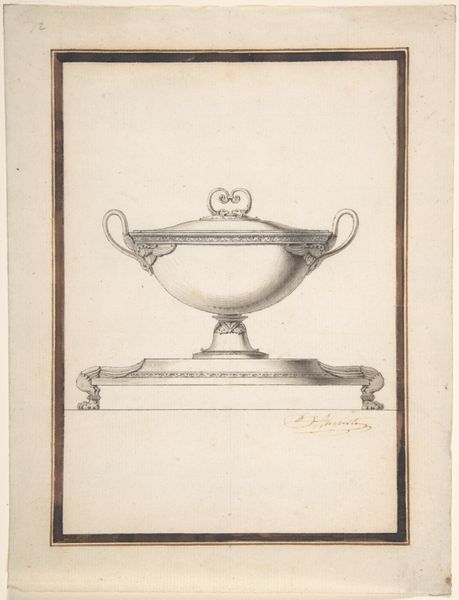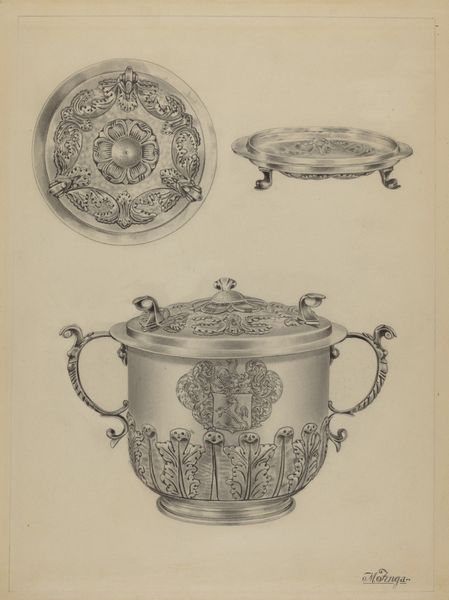
drawing, print
#
drawing
#
neoclacissism
# print
#
decorative-art
#
watercolor
Dimensions: 22.7 x 37.6 cm
Copyright: Public Domain
Editor: Here we have Henri Auguste's "Design for a Covered Bowl with Stand," created sometime between 1770 and 1816. It looks like a watercolor print or drawing, and the details are incredibly precise. I am wondering about this piece, its function. What catches your eye about it? Curator: The meticulously rendered drawing foregrounds the material aspirations of its commissioner. Consider the labor embedded in such a design. Someone had to conceptualize, draft, and refine the image. A patron, someone from the Bourgeois no doubt, then purchases the design with intent to translate this two-dimensional image into a costly three-dimensional object. This bowl becomes less about utility, and more a spectacle of wealth and an ostentatious display of craft. Do you see how the very materiality speaks to social strata? Editor: Yes, that's a great point! It’s not just a design; it’s a symbol of status being produced. So the precision actually serves to amplify that status. I hadn't considered the economic implications of decorative arts in such a direct way. Curator: Exactly. Notice, too, how the artist meticulously renders the stand’s paw feet. The paws are representative of this obsession with exotic material culture to enforce economic disparities. Who has to manufacture that level of fine detail versus the person acquiring the work? It speaks volumes. Editor: So by studying this drawing and understanding the artistic work and the socioeconomic context, we can better appreciate how consumption functioned then. Thanks so much! Curator: Indeed, analyzing the piece with emphasis on labor expands our appreciation beyond its aesthetic appeal.
Comments
No comments
Be the first to comment and join the conversation on the ultimate creative platform.
